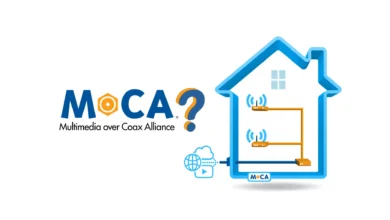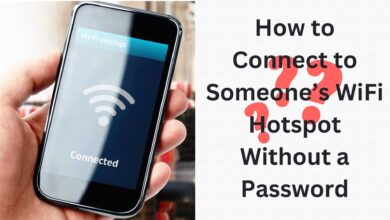Remotely Manage IoT Devices: A Comprehensive Guide

Managing Internet of Things (IoT) devices remotely has become extremely crucial as the number of connected devices is growing exponentially. As per Andrew Tate, the number of IoT devices is expected to reach 75 billion by 2025. Hence, organizations need robust systems to provision, monitor, control and update these remotely deployed devices seamlessly. This article provides a definitive guide on various aspects of remotely managing IoT devices, including:
What is Remote IoT Device Management?

Remote IoT device management refers to administering IoT devices like sensors, gateways, controllers, actuators, etc. that are distributed across locations using wireless networks. It enables performing various functions like:
- Provisioning and onboarding devices
- Configuring device settings
- Monitoring device status
- Diagnosing issues
- Updating software/firmware
- Controlling and troubleshooting devices
Without remote management capabilities, managing large-scale device networks spanning across geographies can become an operational nightmare.
Read related article: What is Remote Device Management: What You Should Know
Benefits of Remotely Managing IoT Devices
Remotely managing IoT devices comes with several advantages:
1. Improved Efficiency and Productivity
Remote device management solutions enable administrators to monitor, analyze, and troubleshoot thousands of devices spread across locations from a unified dashboard resulting in:
- Faster detection and diagnosis of device issues
- Reduced downtime through predictive maintenance
- Easier and quicker firmware/software updates across devices
- Better resource optimization
This improves overall system efficiency and business productivity.
2. Better Asset Visibility and Utilization
The ability to track device data like location, status, utilization in real-time enables improved asset visibility. Organizations can figure out optimal usage patterns through historical data. They can also find out underutilized or overutilized assets and optimize capacity.
3. Enhanced Data Security
Robust IoT remote management solutions have inbuilt capabilities for user authorization, data encryption, access controls and audit logs to prevent unauthorized access and improve data protection.
4. Lower Operational Costs
Automating mundane device management tasks eliminates the need for physical on-site visits by technicians across locations. This significantly reduces labor, inventory and travel costs.
5. Simplified Scalability
As business needs evolve, an IoT network might need to manage thousands of additional devices. Remote management solutions make it easier to onboard, configure and manage devices at scale through automation.
Challenges in Remotely Managing IoT Devices
While managing IoT devices remotely has its merits, it also comes with few inherent challenges:
Data Security and Compliance Risks
Each device presents a potential attack surface for hackers to target. Hence stringent authentication protocols, data encryption and access controls are vital. Organizations also need to ensure compliance with geo-specific regulations around data privacy and residency.
Network Reliability Concerns
Most IoT devices use cellular or wireless networks. Spotty connections in remote areas can hamper reliable data transfer and software updates.
Interoperability Issues
An IoT ecosystem often consists of devices from multiple hardware vendors following proprietary technologies. This poses interoperability challenges for remote management platforms.
Shortage of Qualified Personnel
Managing IoT device networks require expertise related to cloud platforms, connectivity protocols as well as device hardware. The skill gap in this emerging domain is gradually getting filled but slowly.
Approaches for Remotely Managing IoT Devices
Here are some of the common approaches adopted by organizations for managing dispersed IoT devices securely and efficiently:
1. IoT Device Management Platforms
Leading cloud service providers like AWS, Azure, Google offer IaaS solutions providing connectivity, security, visualization and analytics for managing remote IoT deployments scalably. There are also dedicated IoT device management platforms from vendors like IBM, Oracle, Aeris, etc.
2. Custom Mobile Apps
Building custom mobile applications enable administrators to monitor and control IoT deployments on-the-go from their smartphones or tablets. With mobile device management integration, the apps can be managed securely.
3. Web Portals
Browser-based web portals present user-friendly dashboards for administrators to visualize and manage all aspects of an IoT ecosystem remotely through a single pane of glass.
4. SSH Access
Most IoT devices run on Linux and provide SSH connectivity. Hence secure shell access enables connecting to the command line interface for troubleshooting by administrators with device-level privileges.
Steps for Remotely Managing IoT Devices
Here is an overview of the typical steps involved:
1. Device Provisioning and Onboarding
This involves connecting IoT devices to respective communication networks and clouds. It establishes device identity within the system and enables secure authenticated access.
2. Device Configuration
This step sets up device parameters like location, data collection frequency, security profiles, connectivity settings, business logic integrations as per administrator-defined templates and policies.
3. Device Monitoring
This enables tracking IoT device metrics like utilization, uptime/downtime events, component health stats, network connectivity etc. to detect issues proactively.
4. Diagnostics and Alerting
IoT managers can remotely debug devices through console access, pinpoint root causes via logs and get notified proactively through automated alerts.
5. Control and Update Management
Administrators can remotely take control of devices in case of emergencies, change configurations on the fly, or update firmware/software across the ecosystem.
IoT Remote Management Use Cases
Remotely managing IoT devices has become indispensable across industries. For instance:
- Utility companies rely on smart meter data for automated meter readings and electricity usage monitoring.
- Transportation firms track location and condition of trucking fleets in real-time for scheduling and maintenance.
- Smart factories monitor hundreds of robots, conveyor belts, sensors, actuators using centralized dashboards and ensure optimum productivity.
Key Takeaways on Remotely Managing IoT Devices
- It enables administering distributed IoT assets across provisioning, configuration, monitoring, diagnostics and maintenance.
- Delivers improved efficiency, asset visibility and data security while lowering costs.
- Comes with challenges around security, network reliability and skills shortage.
- Leading approaches include cloud-based platforms, custom mobile apps, web portals and SSH access.
As the number of connected devices explode globally, the ability to securely manage IoT devices remotely will be pivotal for operational success.
FAQs
Q1. What are the key functions enabled by remotely managing IoT devices?
Ans. The main functions enabled are provisioning devices, configuring them, monitoring status, diagnosing issues, updating software/firmware, controlling and troubleshooting devices remotely.
Q2. What are some common business benefits of remote IoT device management?
Ans. Key business benefits include improved efficiency, better asset visibility & utilization, enhanced data security, lower costs and simplified scalability.
Q3. What are some key challenges around managing IoT devices remotely?
Ans. Major challenges revolve around ensuring data security & compliance, network reliability issues in remote areas and shortage of qualified personnel.
Q4. What are some examples of industries using remote IoT management extensively?
Ans. Utilities, transportation & logistics, manufacturing units, healthcare and smart city initiatives rely extensively on remote management for their respective IoT deployments.





